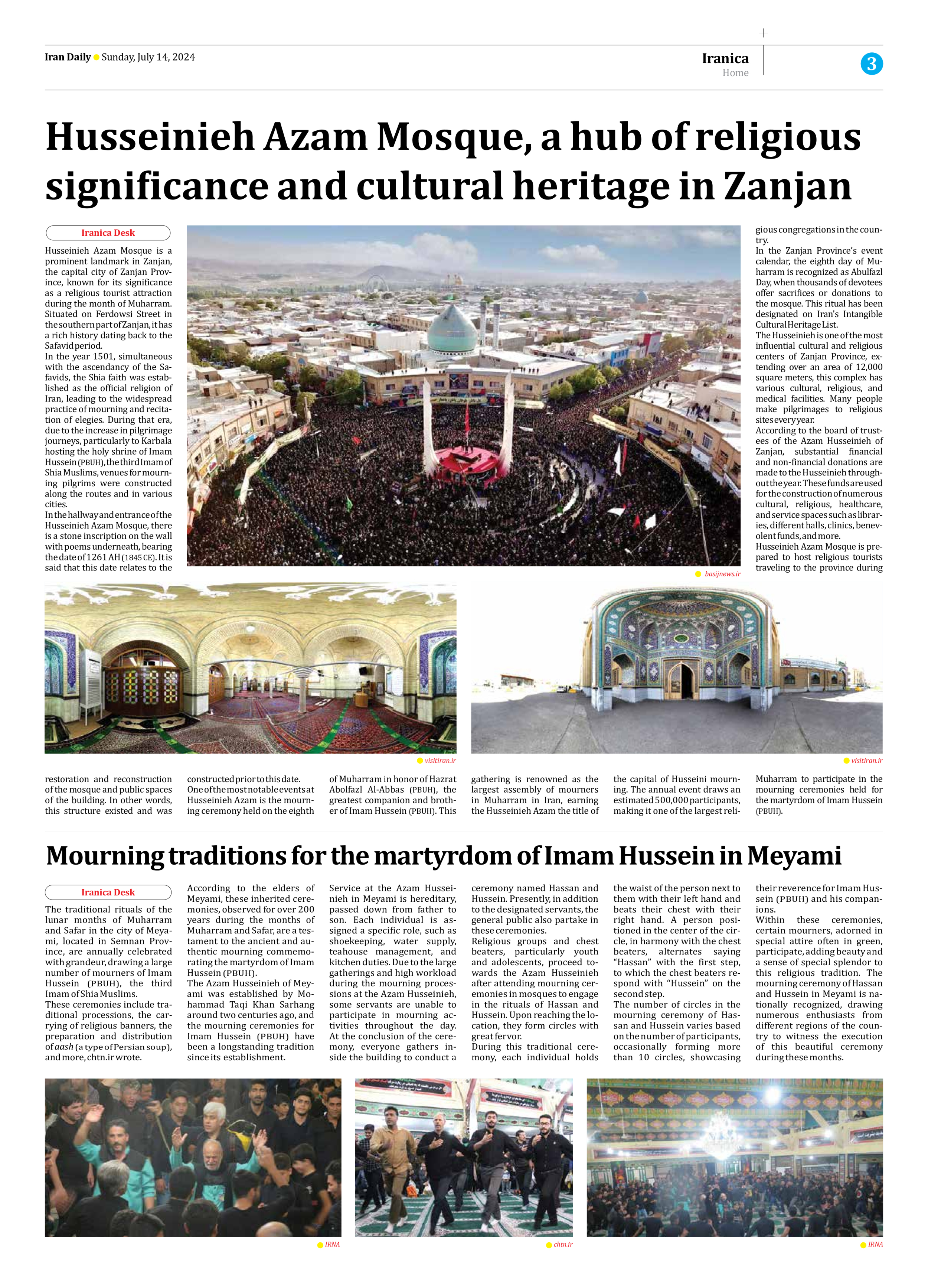
Husseinieh Azam Mosque, a hub of religious significance and cultural heritage in Zanjan
Husseinieh Azam Mosque is a prominent landmark in Zanjan, the capital city of Zanjan Province, known for its significance as a religious tourist attraction during the month of Muharram. Situated on Ferdowsi Street in the southern part of Zanjan, it has a rich history dating back to the Safavid period.
In the year 1501, simultaneous with the ascendancy of the Safavids, the Shia faith was established as the official religion of Iran, leading to the widespread practice of mourning and recitation of elegies. During that era, due to the increase in pilgrimage journeys, particularly to Karbala hosting the holy shrine of Imam Hussein (PBUH), the third Imam of Shia Muslims, venues for mourning pilgrims were constructed along the routes and in various cities.
In the hallway and entrance of the Husseinieh Azam Mosque, there is a stone inscription on the wall with poems underneath, bearing the date of 1261 AH (1845 CE). It is said that this date relates to the restoration and reconstruction of the mosque and public spaces of the building. In other words, this structure existed and was constructed prior to this date.
One of the most notable events at Husseinieh Azam is the mourning ceremony held on the eighth of Muharram in honor of Hazrat Abolfazl Al-Abbas (PBUH), the greatest companion and brother of Imam Hussein (PBUH). This gathering is renowned as the largest assembly of mourners in Muharram in Iran, earning the Husseinieh Azam the title of the capital of Husseini mourning. The annual event draws an estimated 500,000 participants, making it one of the largest religious congregations in the country.
In the Zanjan Province’s event calendar, the eighth day of Muharram is recognized as Abulfazl Day, when thousands of devotees offer sacrifices or donations to the mosque. This ritual has been designated on Iran’s Intangible Cultural Heritage List.
The Husseinieh is one of the most influential cultural and religious centers of Zanjan Province, extending over an area of 12,000 square meters, this complex has various cultural, religious, and medical facilities. Many people make pilgrimages to religious sites every year.
According to the board of trustees of the Azam Husseinieh of Zanjan, substantial financial and non-financial donations are made to the Husseinieh throughout the year. These funds are used for the construction of numerous cultural, religious, healthcare, and service spaces such as libraries, different halls, clinics, benevolent funds, and more.
Husseinieh Azam Mosque is prepared to host religious tourists traveling to the province during Muharram to participate in the mourning ceremonies held for the martyrdom of Imam Hussein (PBUH).







